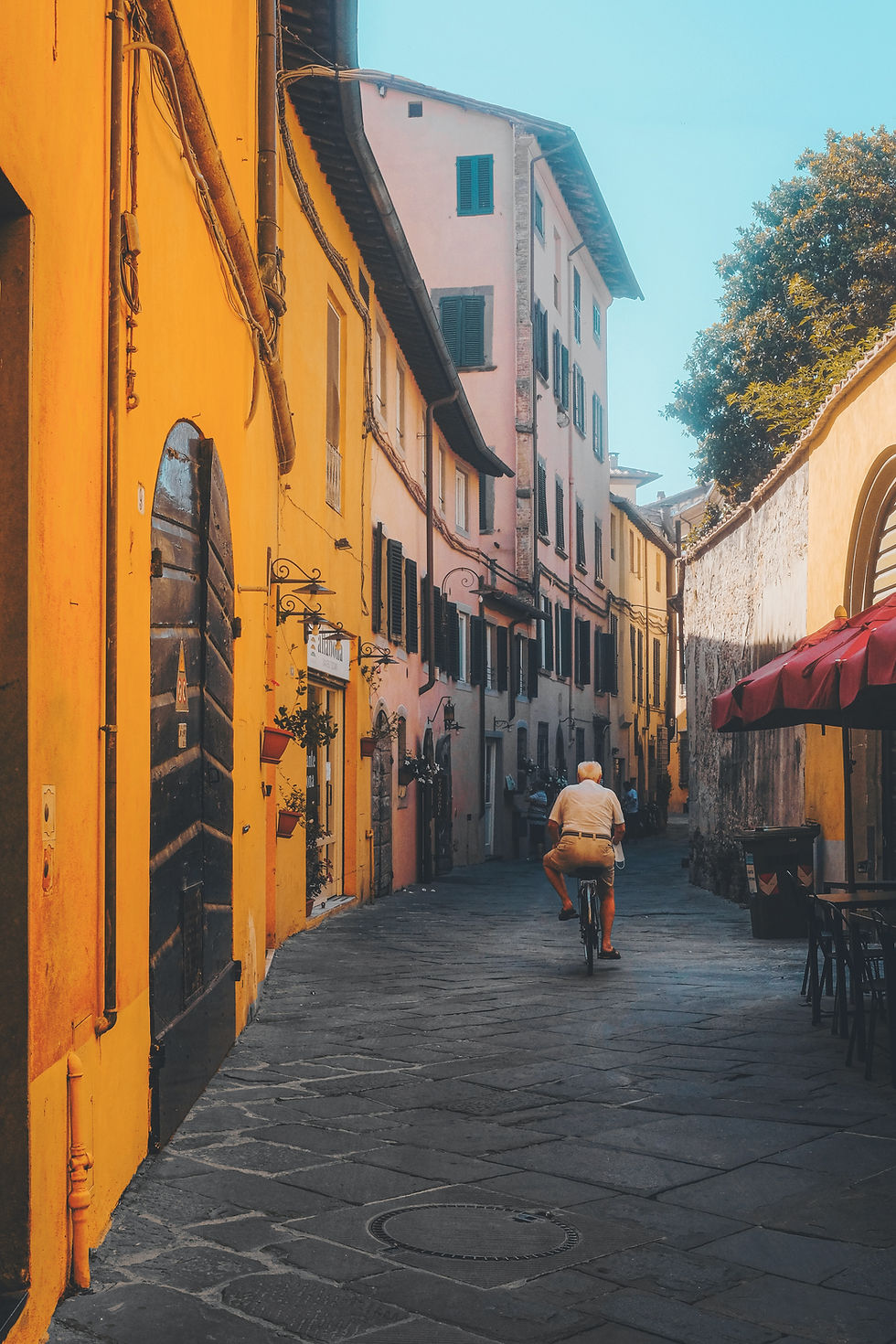The Legend of Lucca
- Nora Studholme
- Feb 22, 2022
- 4 min read
We’re standing underneath the bell tower in Lucca while our guide, Paula, tells us the story. There’s a gray rain falling, causing us to huddle together under a single umbrella and casting a macabre haze over the ancient stone city. A perfect setting for a ghost story.
“It is said,” she begins, “That the Princess of Lucca was once the most beautiful woman in all the cities of Tuscany — perhaps the most beautiful woman in Italy. he was quite aware of her own beauty, and for the first thirty years of her life she lived a lavish, carefree lifestyle, throwing great balls and parties and taking whatever man she might fancy. She was not so much interested in love or relationships or children — she loved her life, the power that came from her beauty and position. But one day, from down in her courtyard, her servants heard a terrible scream, a scream like someone dying.”
The bell above us tolled ominously, obliging our storyteller, who waggled her eyebrows.

“The Princess was not dying — but she had looked in the mirror. And there she saw something terrible — the most terrible thing she could have seen: a wrinkle. She wailed and wept, wandering her halls distraught for days. What would she do? She was losing her beauty, it was the beginning of the end. She put up such a fuss that the devil himself took notice. He came to her and offered an exchange (as devils are wont to do): She could keep her beauty and youth for thirty more years, never aging a day, but at the end of those 30 years, the Princess’s soul would belong to him.
She agreed joyfully — who cared what happened 30 years from now? That was an eternity, her whole life lived again! And so she remained the most beautiful woman in Italy, throwing parties and selecting her man of the hour, having a grand time with her perfect self.
Of course, the 30 years did eventually come to an end, and the week before the Princess began to worry. She had made a deal, that was true, but there had to be a way out of it. And so, on the very night that her soul was due to be collected by the devil, she came to the base of this clock tower —“ our storyteller gestures, “ — and she raced up all the stairs, 150 stairs, up to the very top. She was a clever woman, and she had a plan — she would get to the top of the clock before the devil arrived, and she would turn back the time so that it was not yet the day for her debt to be repaid.
Unfortunately for our Princess, the devil was even more clever than she, and he was waiting for her at the top of the tower. He seized her and they flung themselves from the top, falling down down down through the ground, never to be seen again.”
I do love a delightful, sinister tale.
In actuality, though, Lucca is anything but sinister. It has a sweet old woman feel, a sort of bygone unrequited fierceness that has faded into an embarrassed hospitality. It is one of the chain of “walled cities” of Tuscany, its wall all the more impressive for two reasons. First, its completeness and height, raising the whole city up above the surrounding grounds and protecting it from every quarter like a great fort. Second, for the fact that this mighty (expensive, laborious) wall was never used.
Some of the more proud Luccian’s claim that the wall itself was the reason for the long peace that came upon the city, because no foe dared attack such a powerfully fortified place. But to me the city seems a little bashful, like someone who has recognized their over-inflated sense of self-importance later in life (if only our Princess of Luccian lore could have realized the same).

Each of the walled cities around Tuscany, as our friend who lives here points out, is cut from the particular stone that can be found in that area, so that every city has its own particular hue. I love the thought of this, cities rising from the ground they are placed on, mirroring the earth. Lucca is a soft, dirty pink, adding to its air of gentle elegance. During the Napoleonic era the city was given as a “gift” to Napoleon’s ambitious younger sister, who moved to the town and ruled it with a powerful hand and a distinctly bourgeois French aesthetic sense. Today, as in historical times, it is known for being the home of the greatest music in the region.
Also of note is the round piazza near the center of the city (overlooked by the fated clock tower). It’s still surrounded by apartments of Luccian citizens, laundry flapping out over their balconies like family crests, but it’s become an attraction for tourists because it was built in the cupped palm of the old Roman amphitheater. Standing in the middle of it, it’s easy to imagine the Romans cutting across the beautiful Tuscan countryside, conquering and “civilizing,” building over and over tiny perfect replicas of the city they left behind them.

In our short one-night stay we only experienced a few activities — check out this very strange tower with a full garden at the top, which no one can explain beyond noting that it was the whim of a Duke who wished to have a garden in the sky! But what I will remember is the gentle openness of this little place, the people we genuinely connected with, the still-active fierce pride of being Luccian, a fierceness that is uncalled for and therefore somehow charming.
We will be back to hear music and visit our new friends.



Comments